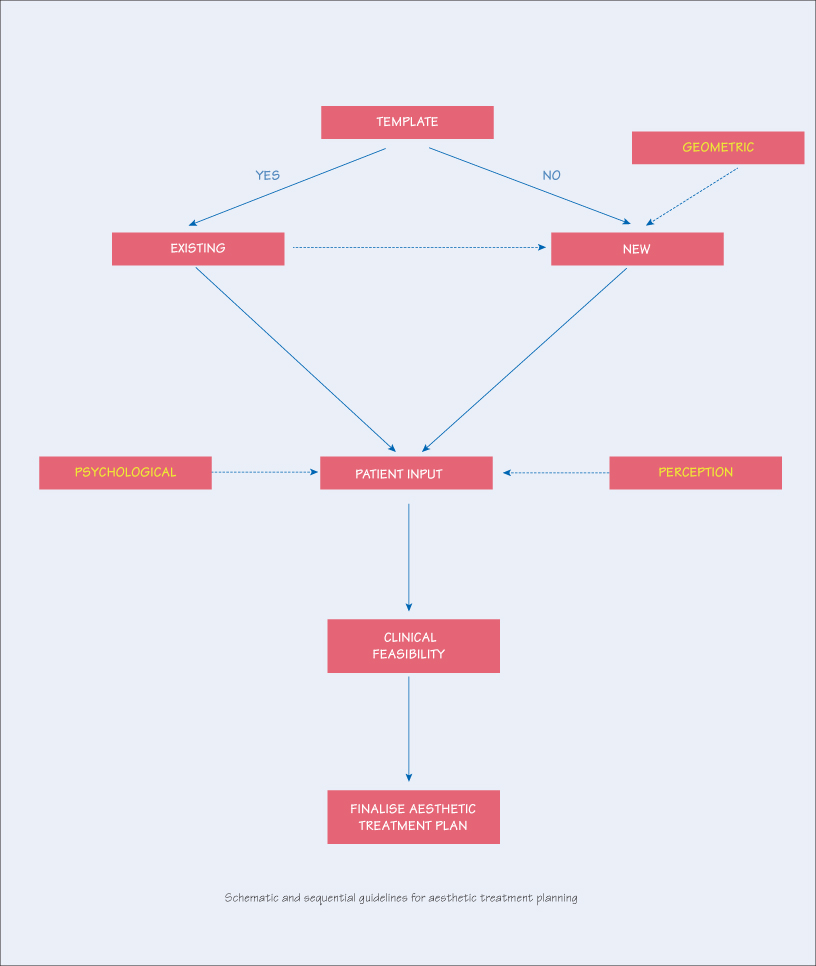25
Anterior Dental Aesthetics: Guidelines

There are numerous theories regarding dental aesthetics, broadly categorised into geometric, psychological and perceptual. No single theory adequately explains the aesthetics of the maxillary anterior six teeth, or can be utilised to prescribe a definitive treatment plan. In reality all theories can be synergistically used to analyse and finalise anterior dental aesthetics.
General Guidelines
Before proposing schematic guidelines for dental aesthetics, it is important to establish principles for treatment planning of aesthetic cases:
- At present, there are no generally accepted objective standards for designing smiles;
- Dental aesthetics cannot be determined or analysed using a single parameter;
- Avoid sensitising patients to minor aesthetic anomalies, which they would normally accept or otherwise ignore;
- Discourage sensitising patients to minor aesthetic anomalies based on media or peer pressure and social trends;
- The culture of dissatisfaction marketing for sensitising patients should be discouraged;
- Adopt a minimally invasive approach for resolving unacceptable dental aesthetics;
- Creating diversity in the maxillary anterior sextant is the key to individuality.
Template
The starting point for a dental aesthetics prescription is establishing a template, which can either be existing or new.
An existing template is the existing dentition, and the proposed aesthetic changes are designed to integrate within this framework. This ensures a minimally invasive approach, and avoids unnecessary overtreatment. If the anterior sextant is edentulous, or requires extensive alterati/>
Stay updated, free dental videos. Join our Telegram channel

VIDEdental - Online dental courses


